How to Grow Beets for Beginners
Are you ready to add something new to your backyard garden? If so, then this guide on How to Grow Beets for Beginners will help you add this amazing vegetable to your growing list.
Gardening 101 all comes down to growing the food you and your family enjoy.
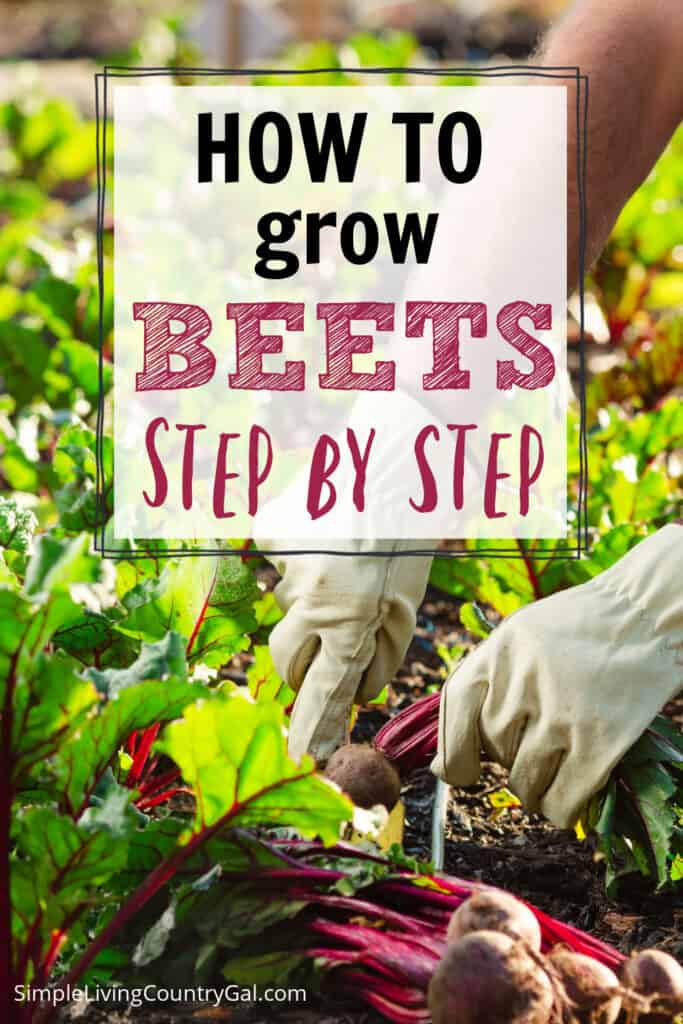
Beets are a cool weather crop that grows quickly, they are fairly easy to grow, and they have good nutritional value, making them a great choice for beginner gardeners. In addition to the beet itself, you can also enjoy the green tops in salads or soups, giving you two options for the work of one crop.
They are also a great choice for northern region gardeners because they can survive frost and near-freezing temperatures. As a beginner gardener, look for bolt-resistant varieties as there will be less chance of them bolting (maturing too soon) in warmer temperatures.
Beets mature quickly, so you can increase your harvest with succession planting. Success planting means planting new seeds every few weeks through early summer, then again in late summer for fall and winter harvests.
Depending on your region and how cold temperatures get, you can grow beets through most of the year. And for the months you’re unable to grow them, when stored properly, beets can be stored for a month or more. They can also be canned, frozen, and pickled so that you can enjoy them all year long.
More Winter Garden Resources:
Beets come in a variety of shapes and colors. They are usually a deep red, the variety you’re probably most familiar with, but there are also white and yellow varieties and ones that are red and white-ringed.
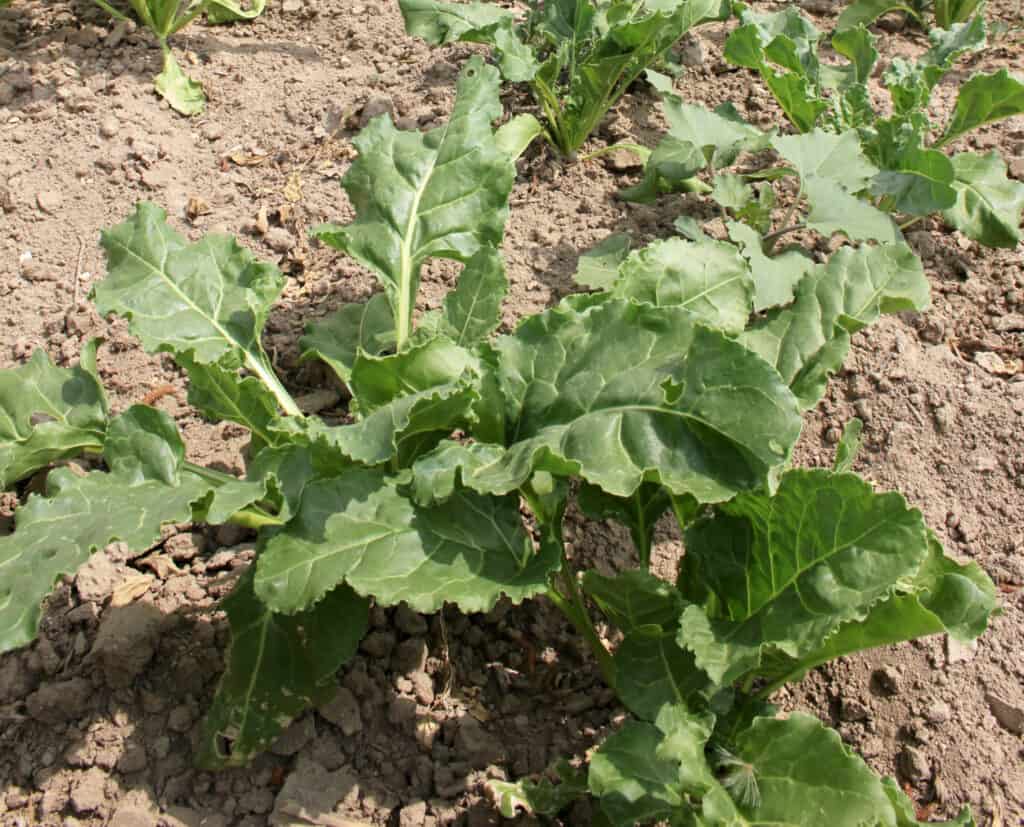
Beet Varieties:
· Chioggia – red-skinned with red and white rings inside
· Detroit Dark Red – traditional beets, round with red roots
· Formanova – Long and cylindrical, they look similar to carrots and are perfect for canning
· Bolder and Touchstone Gold – yellow varieties
· Avalanche and Albino – white varieties
What You Need to Grow Beets
Beets require plenty of sun and quality soil. Since they grow quickly and do better in cooler temperatures, it’s best to plant them in the fall and winter, depending on the temperatures in your zone. But you’ll want to make sure they receive plenty of sunlight, especially when the days are shorter.
You can also plant in early spring, once the ground is workable, to enjoy a longer harvesting time.
When to Plant Beets
Beets can be started in early spring when the soil becomes workable. Since they grow quickly and you can keep replanting, this would be the first planting.
You can continue with successive plantings every 2 to 3 weeks until mid-summer when the temperatures heat up. Successive plantings can be done throughout the summer in northern regions where it doesn’t get as hot. Once the daytime temperatures reach 75° continuously, it will become too hot for the beets to thrive.
In soil that is at least 50°, germination will be quick, about 5 to 8 days. If the soil is colder, germination can take up to 2 to 3 weeks. To speed up germination or when planting in areas with low moisture, soaking the seeds in water for 24 hours before planting will help.
To harvest in the fall, sow seeds from mid-summer through early fall, beginning about 4 to 6 weeks before the first frost of the season.
Zone 9 and warmer areas can grow a winter crop when planting in early to late fall.
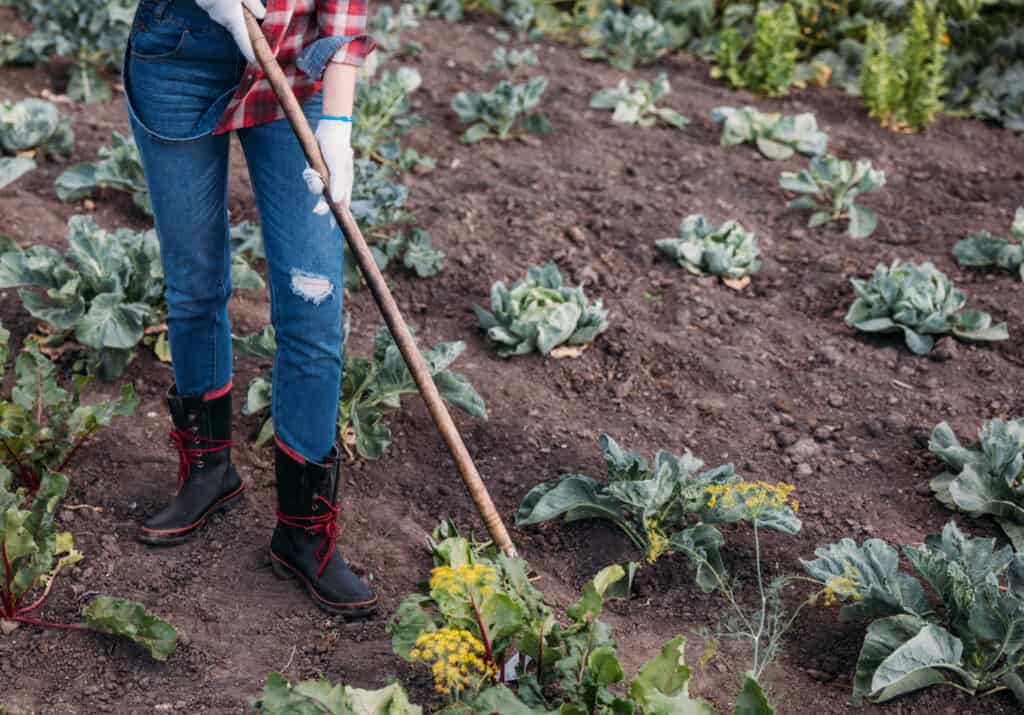
How to Plant Beets
Beets do best when the seeds are sown directly into the soil so that the roots are not disturbed, but it is possible to transplant them when they are very young. Because they tolerate cold weather, and even prefer it, they usually don’t have any trouble being started outdoors.
Roots are delicate and fragile when the plants are young, so if you’re transplanting seedlings, do so with care and patience.
Sow seeds ½” deep and 1 to 2” apart in rows that are about 12” apart, then cover with a thin layer of soil.
Each wrinkled beet seed is actually a cluster of seeds containing 2 to 4 seeds. You will need to thin the plants once they are about 4” tall to about 3 to 4” apart. This will allow the root to grow to the proper size. When thinning, don’t pull the plant up but instead cut the greens at soil level so you don’t disturb the roots of the plants you’re keeping.
After planting, regularly lay a thin layer of mulch or straw over the soil and water. Weed as needed, but be careful around the plants so you don’t disturb the roots as they are shallow.
How Many Plants to Plant
You’ll want to plan on about 15-30 beet plants per person in your family, depending on how often you plan to eat them and if you plan to can them.
How Long Do Beets Take to Grow?
Beets mature fairly quickly. Depending on the variety you plant, you can expect to harvest them in 55 to 70 days.
Temperature
Beets do well in colder temperatures. They can be planted in soil that is at least 40° once the ground is workable, and they will thrive in temperatures up to 75°.
Sun
Beets need to be planted in full sun, preferably at least 6 hours of direct sunlight per day.
Soil
Well-prepared, fertile soil is preferred, but beets can tolerate average to low soil fertility. The soil should be free of rocks, dirt clods, and other obstacles that can keep them from forming. The soil pH should be between 6.0 and 7.0, but not below 6.0, as that is too acidic for them.
If your soil is poor, it can be amended with a balanced (10-10-10) fertilizer before planting.
Water
Beets do need a fair amount of water, but not necessarily as much as other plants. You’ll want to make sure they get about an inch of water per week during the growing season and that can be a combination of rain water and supplemental watering.
Fertilizing
When you amend the soil before planting and lay a thin layer of mulch on top of the soil, fertilizing is usually not necessary. If you do decide to fertilize, be careful of excessive nitrogen. It will cause the greens to be abundant but the bulbs to be small.
Spacing
Sow seeds 1 to 2 inches apart in rows that are about 12” apart.
Depth
Beet seeds should be planted about a ½” deep.
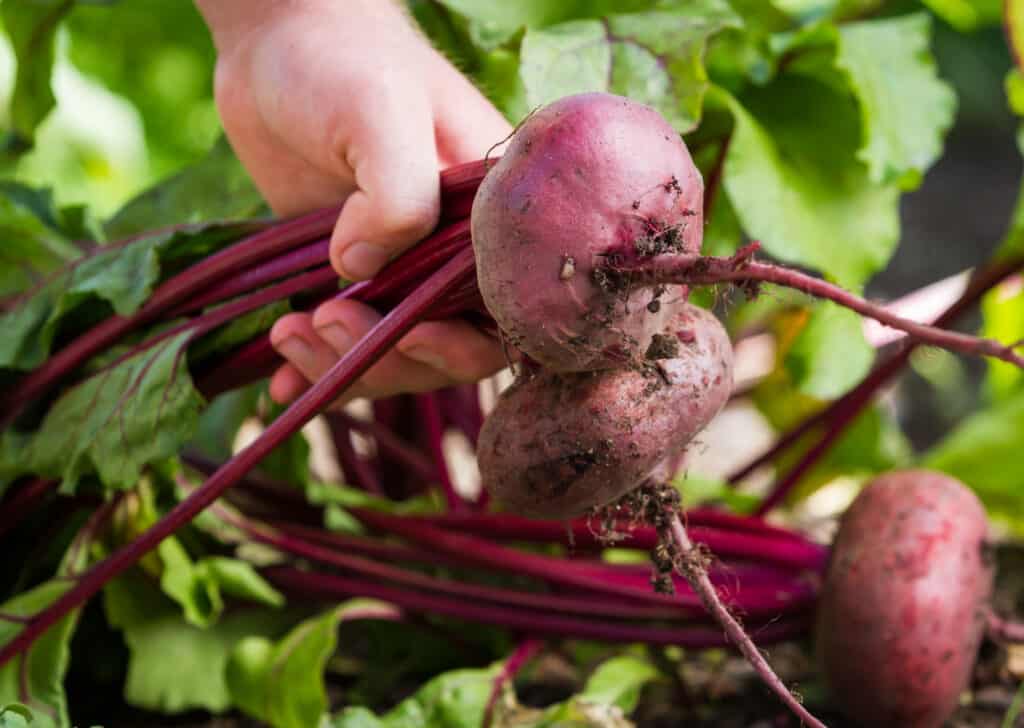
Growing Tips for Beets
· Avoid planting near where spinach or Swiss chard has been previously planted. They are part of the beet family and are susceptible to similar pests and diseases.
· When thinning the plants, don’t pull up the plants you want to remove. This can disturb the roots of the plants you plan to keep. Simply snip off the greens at soil level. These greens are edible, so enjoy them instead of tossing them.
· Consider covering the beet plants with row covers to prevent pests from attacking the leaves.
· If sowing seeds indoors, start the seeds 6 to 8 weeks before the last spring frost then harden off the transplant outside 4 weeks later before planting in your garden.
· A larger, continual harvest is possible with succession planting. Plant new seeds every 3 weeks until temperatures reach 75° on a continual basis. Beets become woody when the temperatures are too hot.
· As beetroots begin to grow, the roots can start to push themselves out of the ground. You may need to hill up the soil around the roots to keep them underground.
· Beets make great companion plants for onions, kohlrabi but avoid planting them near pole beans and any kind of crop that provides shade. They also shouldn’t be planted near spinach or Swiss chard as many of the same pests attack them.
· Beets can also be grown in containers. Thin the seedlings to 4” apart when planting in containers.
· Keep beets evenly watered, and don’t let the soil dry out. A lack of water will cause the roots to become stunted and tough.
· To help conserve moisture in the soil and reduce weeds, lay mulch over the soil a couple of inches deep. If slugs are a problem, wait until the plants are a few inches tall before mulching.
· If you notice weeds near the beets, remove them by hand, don’t use tools. Tools can disturb the roots, nick them, and expose them to disease.
· If young plants don’t develop, it’s most likely due to temperatures being too cold or a lack of moisture in the soil.
· Ragged holes in leaves can be caused by slugs, caterpillars, or other pests. Row covers can help prevent these pests, but if you notice them, pick them off by hand.
How to Harvest Beets
Most varieties take about 55 to 70 days to mature so beets should be ready to harvest approximately 2 months after planting. They’ll be ready to harvest when they are the size of a golf ball or larger. The larger the root, the more tough and woody it will be so harvesting when they’re smaller provides a better taste.
Harvesting requires a little patience because you don’t want to just pull them out of the ground. This can disturb the plants around it. Instead, loosen the soil around the plant you’re harvesting, then gently pull it out of the soil.
The beet greens can be harvested almost anytime. But just take 1 or 2 mature leaves per plant until the leaf blades are at least 6” tall and become tough. The roots won’t fully form without the greens so leaving some is necessary for good development.
How to Store Beets
Fresh beets can be refrigerated for 5 to 7 days. Clipping the tops off will help them stay fresher longer. Leave about an inch of stem on each beet and store the greens separately. The greens are edible and tasty, so they can be added to salads and even cooked in soups.
For long-term storage in a root cellar, brush off any soil remaining from when they were harvested, then bury them in layers surrounded by dry sand or sawdust, making sure they’re not touching as this can cause them to rot.
They can also be stored in a closet or cooler in your basement as long as the area is cool and dry.
If they start to sprout, this is a sign of poor storage, and it can lead to rot and decay.
Beets can also be frozen, canned, or pickled.
What Diseases and Pests to Watch For
There are a few pests and diseases to keep an eye out for including:
· Flea Beetles
· Leaf Miners
· Leaf Spot
· Cercospora
· Leafhoppers
· Mosaic Virus
Fortunately, beets don’t have many disease problems; they are mostly affected by pests which can be controlled.
Beets are easy to grow, don’t need a lot of maintenance, and can be grown over and over for many months of harvesting. They also grow well in containers if your gardening space is limited. And, since they grow in shallow soil, they can also be grown in raised beds. Since they have a lot of nutritional value and you can enjoy both the root and the greens, they are a great addition to many meals.
Add this How to Grow Beets for Beginners guide to your gardening binder to refer to year after year.
More How to Grow Resources:
- How to Grow Eggplant for Beginners
- How to Grow Radishes for Beginners
- How to Grow Broccoli for Beginners
How To Grow Beets
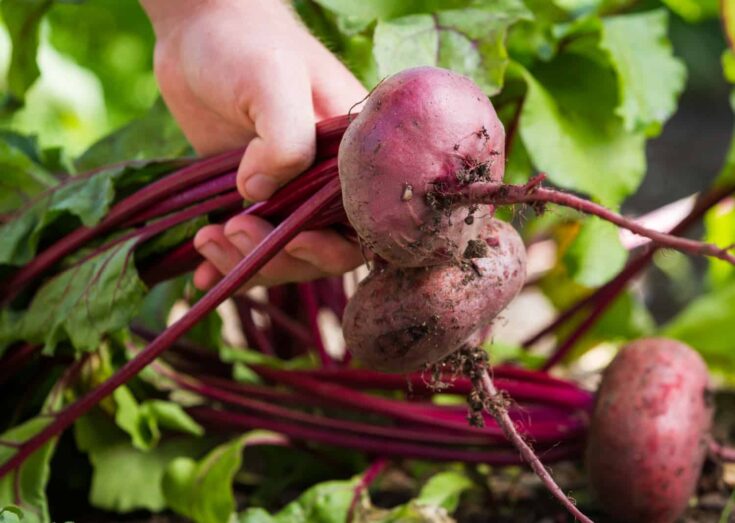
How to grow healthy full beets in your own backyard that are great for mixing in with your dinners for a healthier twist! Get planting and care tips so that you are able to grow the best beets this year. How to grow beets step by step, from planting to harvest.
Materials
- Beet Seeds
- Water
- Fertilizer (optional)
Tools
- Rake
- Hoe
- Shovel
- Garden Shears
- Row covers
- Garden or Grow Bags/Grow Containers
Instructions
- Sow seeds ½” deep and 1 to 2” apart in rows that are about 12” apart, then cover with a thin layer of soil.
- Each wrinkled beet seed is actually a cluster of seeds containing 2 to 4 seeds. You will need to thin the plants once they are about 4” tall to about 3 to 4” apart.
- After planting, regularly lay a thin layer of mulch or straw over the soil and water.
- Make sure beets are receiving about an inch of water per week from either watering or rain.
- Weed as needed.
- Beets will be ready to harvest when about he size of a golf ball or slightly larger (roughly 2 months after planting).
- Beets can be stored in a refrigerator for 5-7 days or in a root celler for longer term storage.
Notes
- As beetroots begin to grow, the roots can start to push themselves out of the ground. You may need to hill up the soil around the roots to keep them underground.
- Beets can also be grown in containers. Thin the seedlings to 4” apart when planting in containers.
- Keep beets evenly watered, and don’t let the soil dry out. A lack of water will cause the roots to become stunted and tough.
- To help conserve moisture in the soil and reduce weeds, lay mulch over the soil a couple of inches deep. If slugs are a problem, wait until the plants are a few inches tall before mulching.
- If you notice weeds near the beets, remove them by hand, don’t use tools. Tools can disturb the roots, nick them, and expose them to disease.
- If young plants don’t develop, it’s most likely due to temperatures being too cold or a lack of moisture in the soil.
Recommended Products
As an Amazon Associate and member of other affiliate programs, I earn from qualifying purchases.
-
Garden Netting, Jevrench Durable Ultra Fine Garden Netting, Garden Plant Cover Row Cover Makes Plants, Vegetables, Fruits, and Flowers Grow Better (4ft x 25ft)
-
gonicc 8" Professional Premium Titanium Bypass Pruning Shears (GPPS-1003), Hand Pruners, Garden Clippers.
-
The Old Farmer's Almanac Heirloom Beet Seeds (Detroit Dark Red) - Approx 360 Seeds - Non-GMO, Open Pollinated, USA Origin



